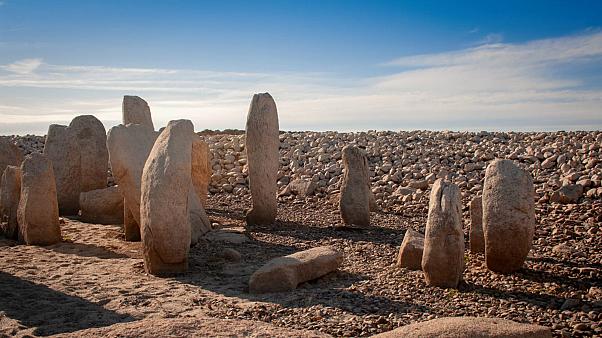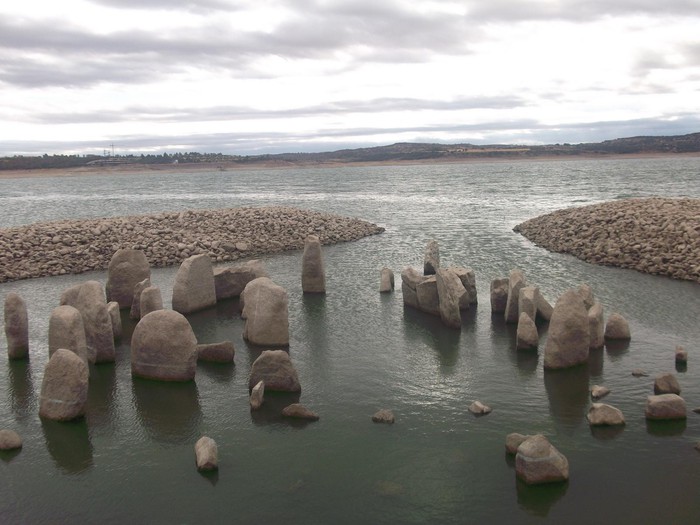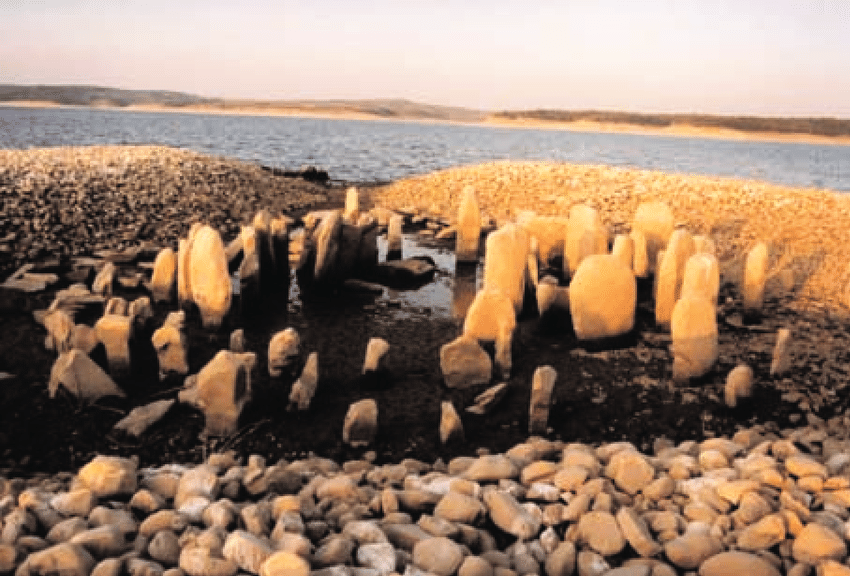<< Our Photo Pages >> Dolmen de Guadalperal - Burial Chamber or Dolmen in Spain in Extremadura
Submitted by TheCaptain on Sunday, 28 August 2022 Page Views: 7564
Neolithic and Bronze AgeSite Name: Dolmen de GuadalperalCountry: Spain
NOTE: This site is 3.712 km away from the location you searched for.
Region: Extremadura Type: Burial Chamber or Dolmen
Nearest Town: Caceres Nearest Village: El Gordo
Latitude: 39.832500N Longitude: 5.4099W
Condition:
| 5 | Perfect |
| 4 | Almost Perfect |
| 3 | Reasonable but with some damage |
| 2 | Ruined but still recognisable as an ancient site |
| 1 | Pretty much destroyed, possibly visible as crop marks |
| 0 | No data. |
| -1 | Completely destroyed |
| 5 | Superb |
| 4 | Good |
| 3 | Ordinary |
| 2 | Not Good |
| 1 | Awful |
| 0 | No data. |
| 5 | Can be driven to, probably with disabled access |
| 4 | Short walk on a footpath |
| 3 | Requiring a bit more of a walk |
| 2 | A long walk |
| 1 | In the middle of nowhere, a nightmare to find |
| 0 | No data. |
| 5 | co-ordinates taken by GPS or official recorded co-ordinates |
| 4 | co-ordinates scaled from a detailed map |
| 3 | co-ordinates scaled from a bad map |
| 2 | co-ordinates of the nearest village |
| 1 | co-ordinates of the nearest town |
| 0 | no data |
Internal Links:
External Links:

Consisting of 93 menhirs, some call the monument the “Spanish Stonehenge” although prehistory professor Primitiva Bueno Ramírez told Euronews that it’s a different construction to the iconic English monument. [you don't say! - MegP Ed]
Note: Guadalperal Dolmen reappears after the recent extreme drought, more in the comments on our page
You may be viewing yesterday's version of this page. To see the most up to date information please register for a free account.



Do not use the above information on other web sites or publications without permission of the contributor.
Nearby Images from Flickr



The above images may not be of the site on this page, but were taken nearby. They are loaded from Flickr so please click on them for image credits.
Click here to see more info for this site
Nearby sites
Click here to view sites on an interactive map of the areaKey: Red: member's photo, Blue: 3rd party photo, Yellow: other image, Green: no photo - please go there and take one, Grey: site destroyed
Download sites to:
KML (Google Earth)
GPX (GPS waypoints)
CSV (Garmin/Navman)
CSV (Excel)
To unlock full downloads you need to sign up as a Contributory Member. Otherwise downloads are limited to 50 sites.
Turn off the page maps and other distractions
Nearby sites listing. In the following links * = Image available
6.8km WSW 245° Los Mármoles Ancient Village or Settlement
8.2km SW 229° Los Labranos Burial Chamber or Dolmen
8.3km SW 229° El Alisar Burial Chamber or Dolmen
8.3km SW 228° El Gambute Burial Chamber or Dolmen
8.3km SW 230° Las Murcias Burial Chamber or Dolmen
8.3km SW 229° Dolmen de Ibor Burial Chamber or Dolmen
8.4km SW 229° El Horquillo Burial Chamber or Dolmen
10.8km WSW 250° Los Pibores Burial Chamber or Dolmen
16.7km SE 140° Las Talayuelas 2 Burial Chamber or Dolmen
16.8km SE 140° Las Talayuelas 1 Burial Chamber or Dolmen
16.8km SE 140° El Tesoro Burial Chamber or Dolmen
22.1km NW 313° Cerro del Puchero Burial Chamber or Dolmen
22.1km NW 313° Las Lomas Burial Chamber or Dolmen
22.3km W 261° La Cueva dolmen Burial Chamber or Dolmen
23.1km ESE 104° Azután dolmen* Burial Chamber or Dolmen
30.5km SE 127° La Estrella* Burial Chamber or Dolmen
32.2km N 349° Vega del Nino Burial Chamber or Dolmen
32.3km NNW 349° Cruz del Pobre Burial Chamber or Dolmen
33.4km NNW 344° Cerro del Tejar Burial Chamber or Dolmen
35.2km NW 308° Dolmen de Lamoina* Passage Grave
35.5km NNW 333° Losar de la Vera Burial Chamber or Dolmen
36.4km NW 307° El Canchal 1 Burial Chamber or Dolmen
37.6km NW 310° El Canchal 17 Burial Chamber or Dolmen
37.6km NW 310° El Canchal 18 Burial Chamber or Dolmen
37.6km NW 310° El Canchal 13 Burial Chamber or Dolmen
View more nearby sites and additional images






 We would like to know more about this location. Please feel free to add a brief description and any relevant information in your own language.
We would like to know more about this location. Please feel free to add a brief description and any relevant information in your own language. Wir möchten mehr über diese Stätte erfahren. Bitte zögern Sie nicht, eine kurze Beschreibung und relevante Informationen in Deutsch hinzuzufügen.
Wir möchten mehr über diese Stätte erfahren. Bitte zögern Sie nicht, eine kurze Beschreibung und relevante Informationen in Deutsch hinzuzufügen. Nous aimerions en savoir encore un peu sur les lieux. S'il vous plaît n'hesitez pas à ajouter une courte description et tous les renseignements pertinents dans votre propre langue.
Nous aimerions en savoir encore un peu sur les lieux. S'il vous plaît n'hesitez pas à ajouter une courte description et tous les renseignements pertinents dans votre propre langue. Quisieramos informarnos un poco más de las lugares. No dude en añadir una breve descripción y otros datos relevantes en su propio idioma.
Quisieramos informarnos un poco más de las lugares. No dude en añadir una breve descripción y otros datos relevantes en su propio idioma.